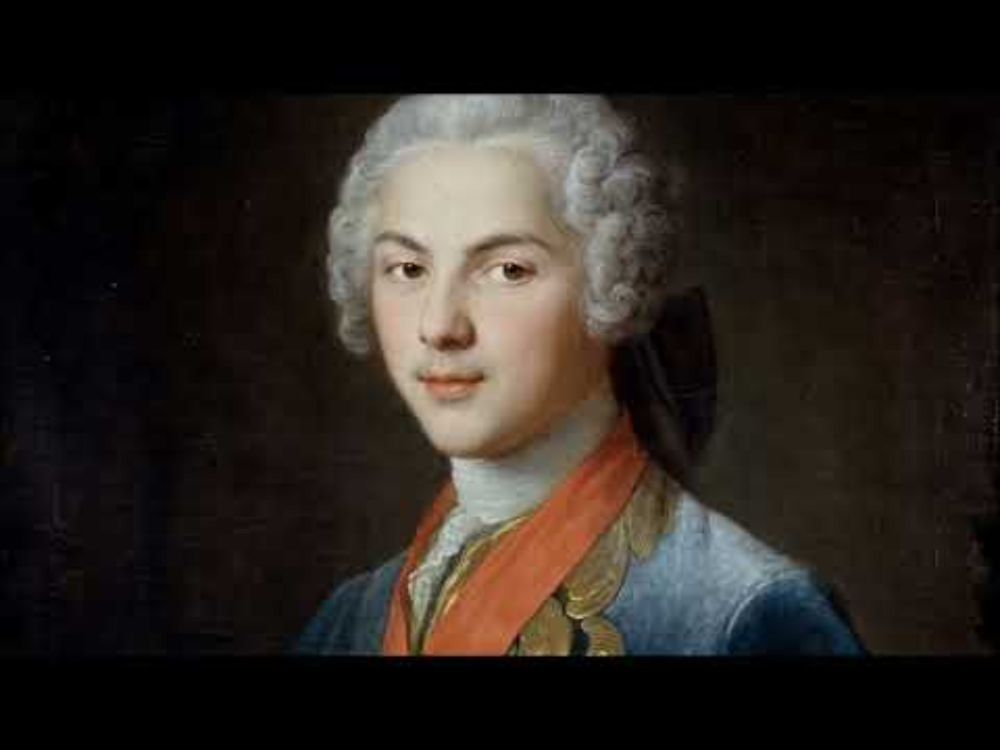Jean Baptiste Loeillet (1688-c.1720) - Sonata (III) à une flûte & basse-continue (c.1710)
Gelukkige verjaardag Jean Baptiste Loeillet! 🍷🎁 Composer: Jean Baptiste Loeillet (1688-c.1720) Work: Sonata (III, G-Dur) à une flûte & basse-continue, Premier ouvrage (c.1710) Performers: Ferdinand Conrad (blockflöte); Johannes Koch (viola da gamba); Hugo Ruf (1925-1999, cembalo) Painting: Jan Verkolje (1650-1693) - A Musical Company (1673) HD image: https://flic.kr/p/2nwo9E5 Engraving: Anoniem - Gezicht op Gent (c.1720) HD image: https://flic.kr/p/2nwqDMi Further info: https://www.discogs.com/sell/release/13798013 Listen free: No available --- Jean Baptiste Loeillet [‘Loeillet de Gant’] (Ghent, bap. 6 July 1688 - Lyons, c.1720) Flemish composer, son of Pieter Loeillet (1651-1735). He was the eldest son of Loeillet by his first wife, Marte (née Nortier). Loeillet de Gant, as he styled himself on all his published compositions, went to Lyons in the service of the archbishop, Paul-François de Neufville de Villeroy, and died there at an early age – before 1729 and probably about 1720. He has often been confused with his cousin Jean Baptiste Loeillet (1680-1730). 48 sonatas for recorder and continuo, together with some other works, were composed by Loeillet de Gant and published in Amsterdam between about 1710 and 1717, and republished in London by Walsh & Hare between about 1712 and about 1722. His sonatas are in the Italian style of Corelli and are generally of the sonata da chiesa type, although some (especially op.3 onwards) include several movements with named dances such as allemanda, sarabanda, gavotta and giga and have more than four movements. The bass parts are more independent than those of John Loeillet of London, not only in the fugal second movements, where they may play an equal part, but also in the slow movements, where they often have their own rhythmic patterns throughout the movement; his basses often start a movement with two or three bars solo before the recorder enters. Loeillet de Gant had a stronger contrapuntal sense than his two cousins; occasionally his fugal movements have clearly differentiated countersubjects but they lack the skill shown by many of his contemporaries. Unlike John Loeillet, Loeillet de Gant ornamented many of his slow movements in the French manner, with flourishes of demisemiquavers and notes perdues (the ‘little note that does not enter into the bar’; Marais: Pièces à une et à deux violes, 1686).
Top Bluesky Posts
Même si cela peut paraître bizarre, j'ai pendant un certain temps étudié la flûte à bec (au conservatoire de ma banlieue natale). C'est là que j'ai appris à connaître et à apprécier Lœillet de Gand (attention ! celui qui était au service de l'archevêque de Lyon). www.youtube.com/watch?v=PKFU...




